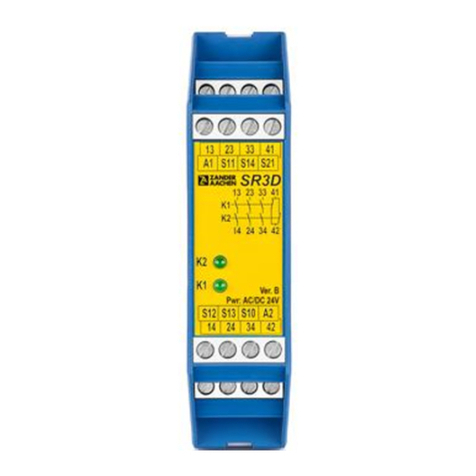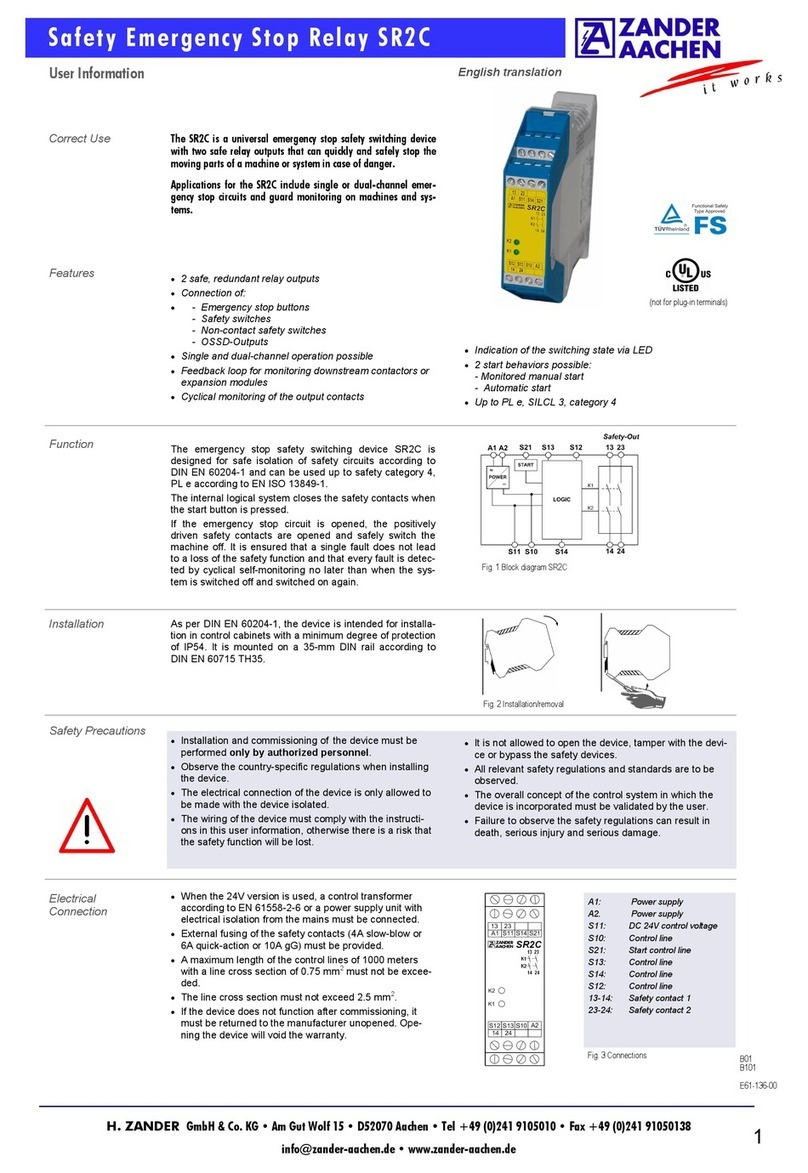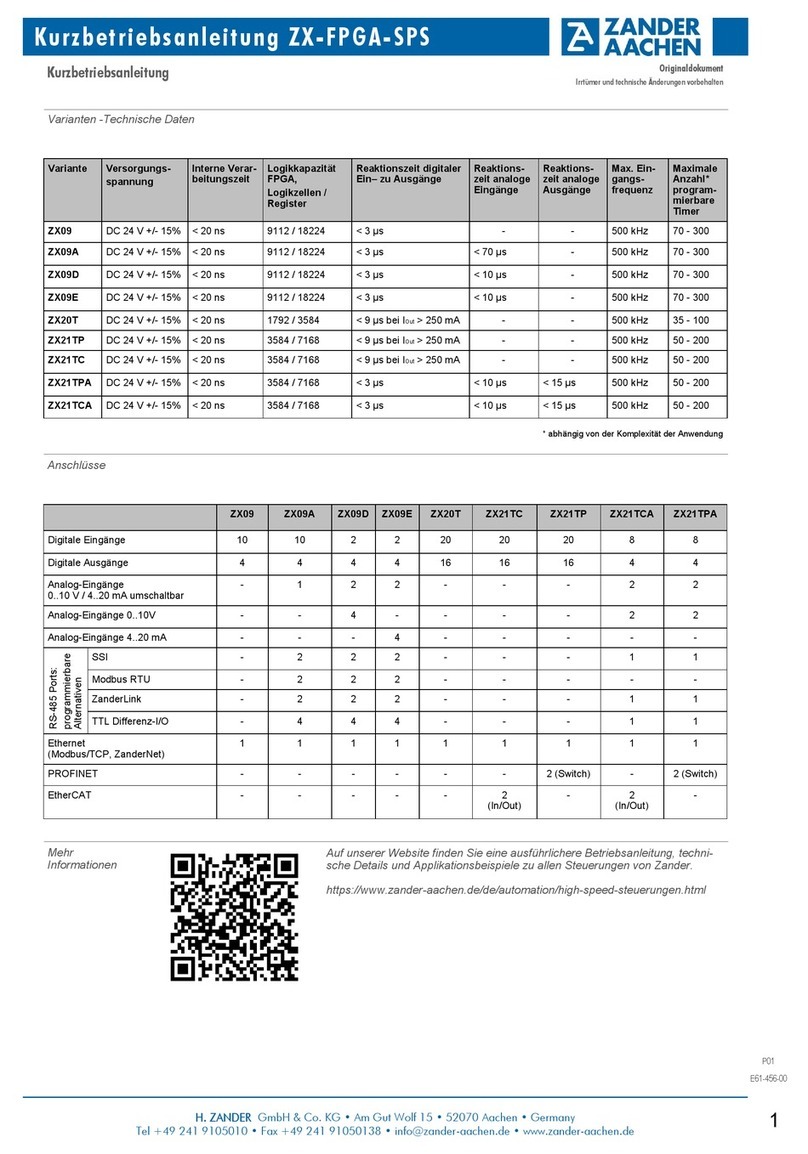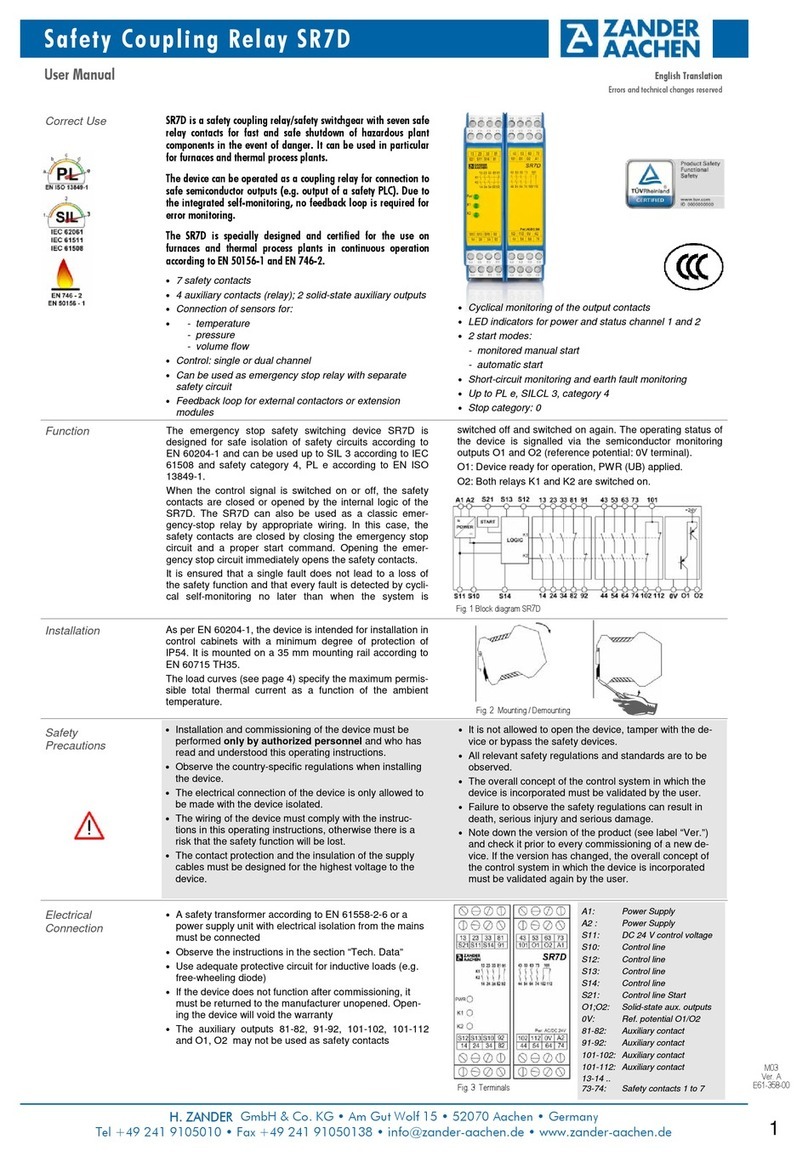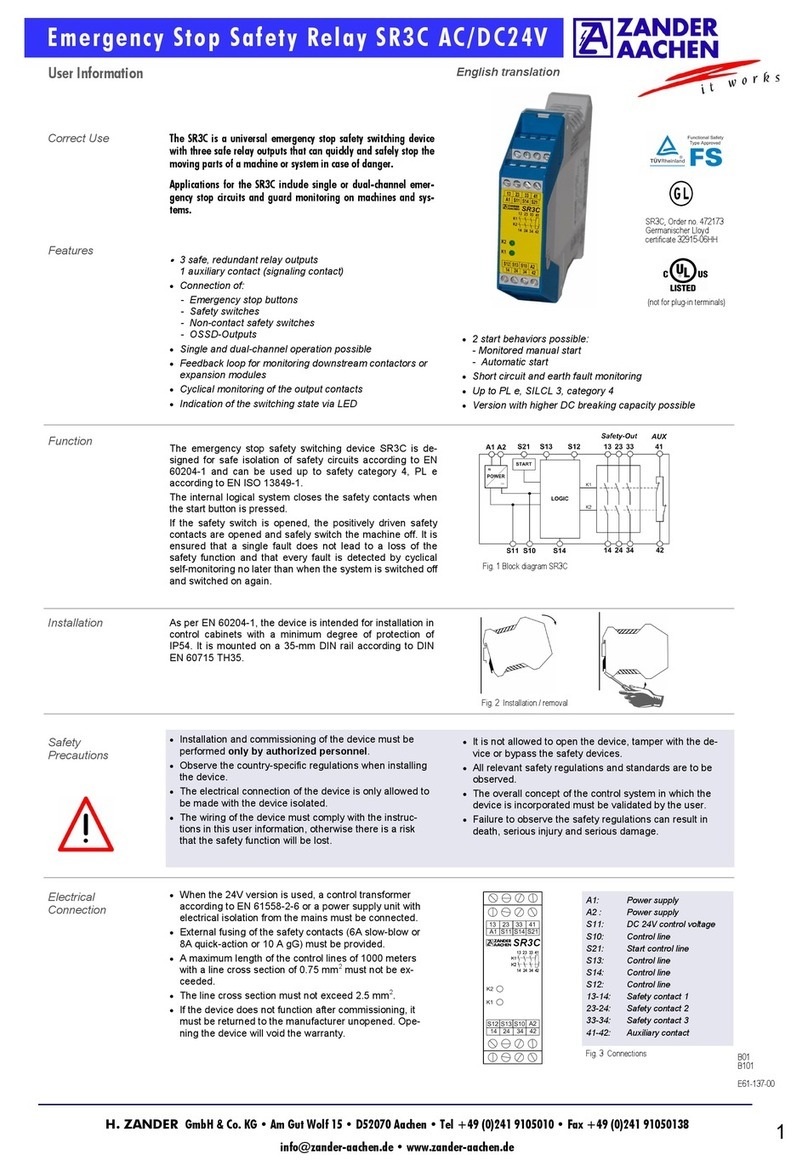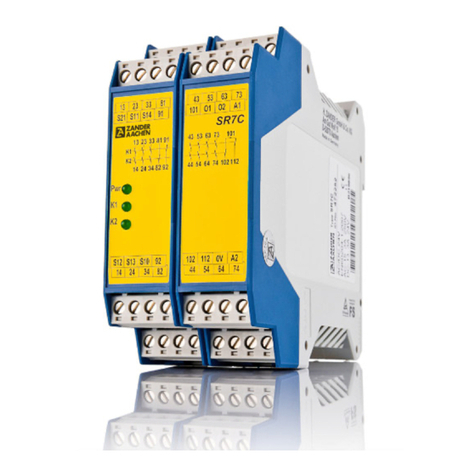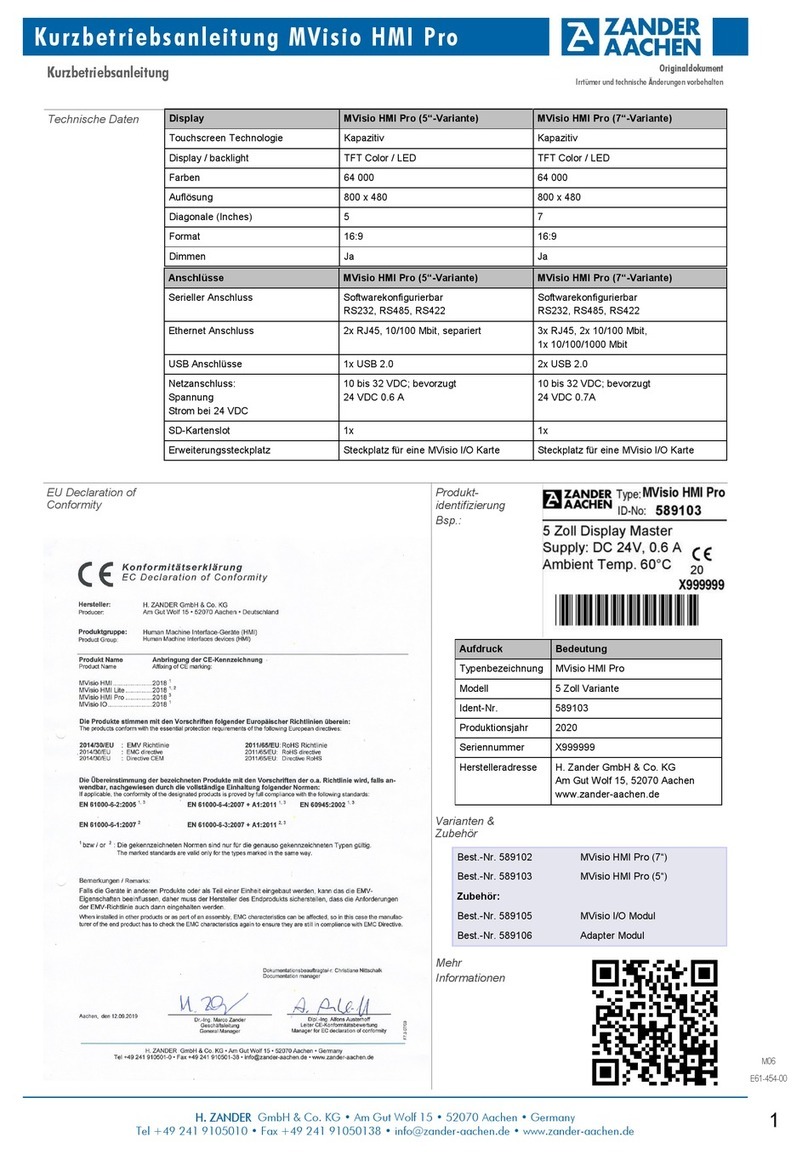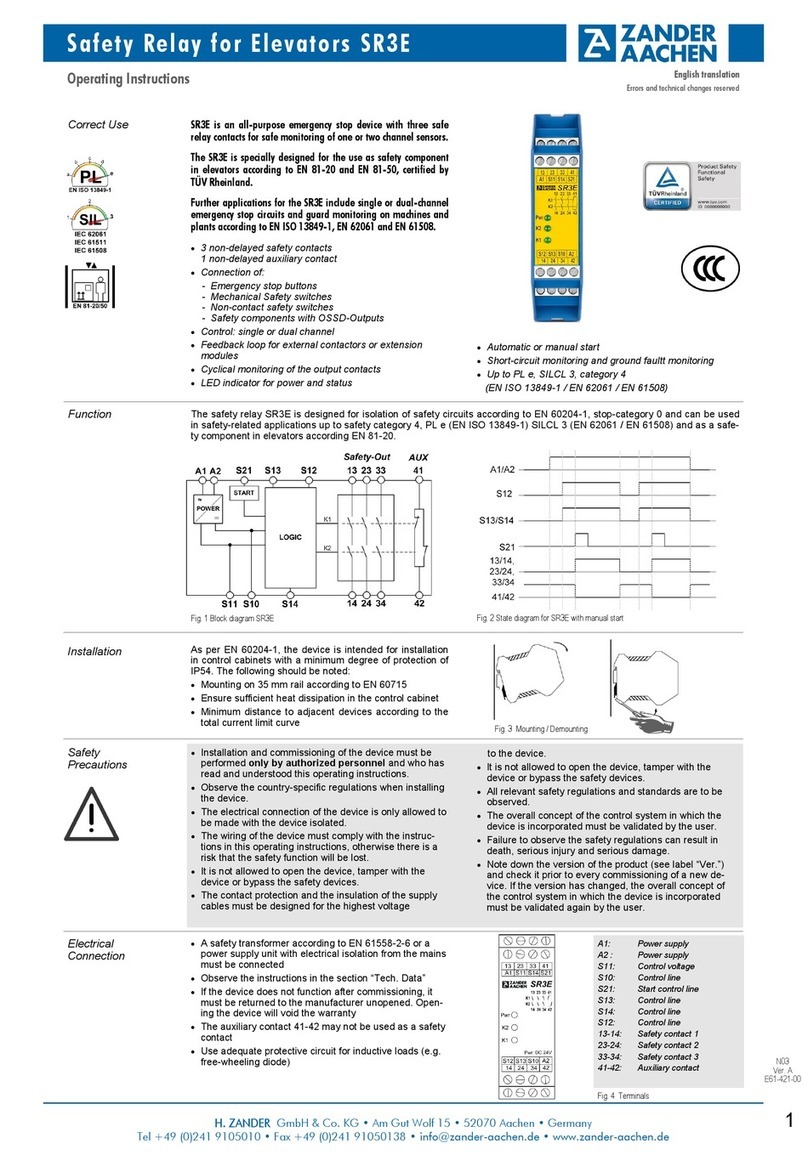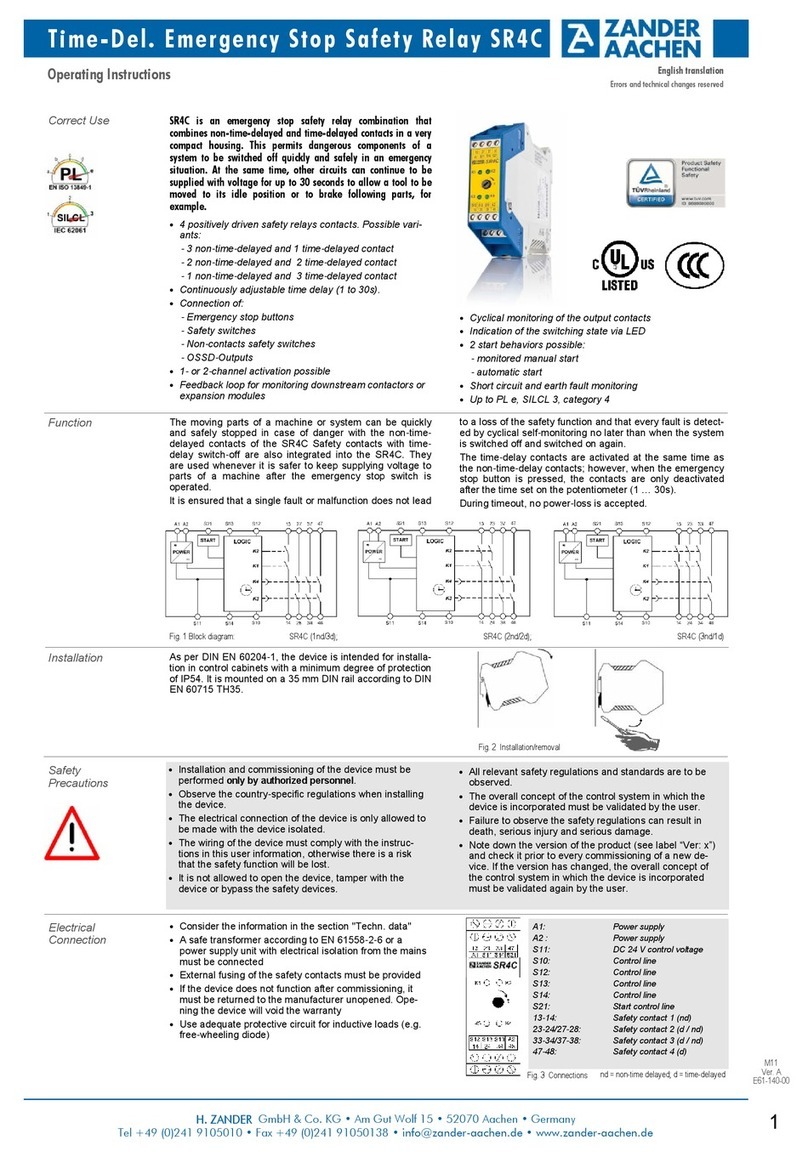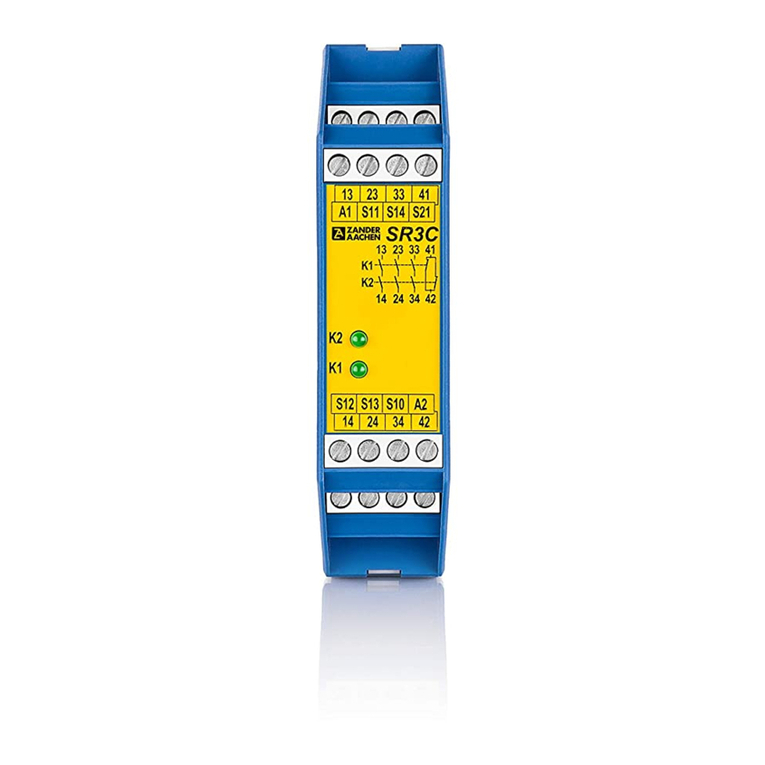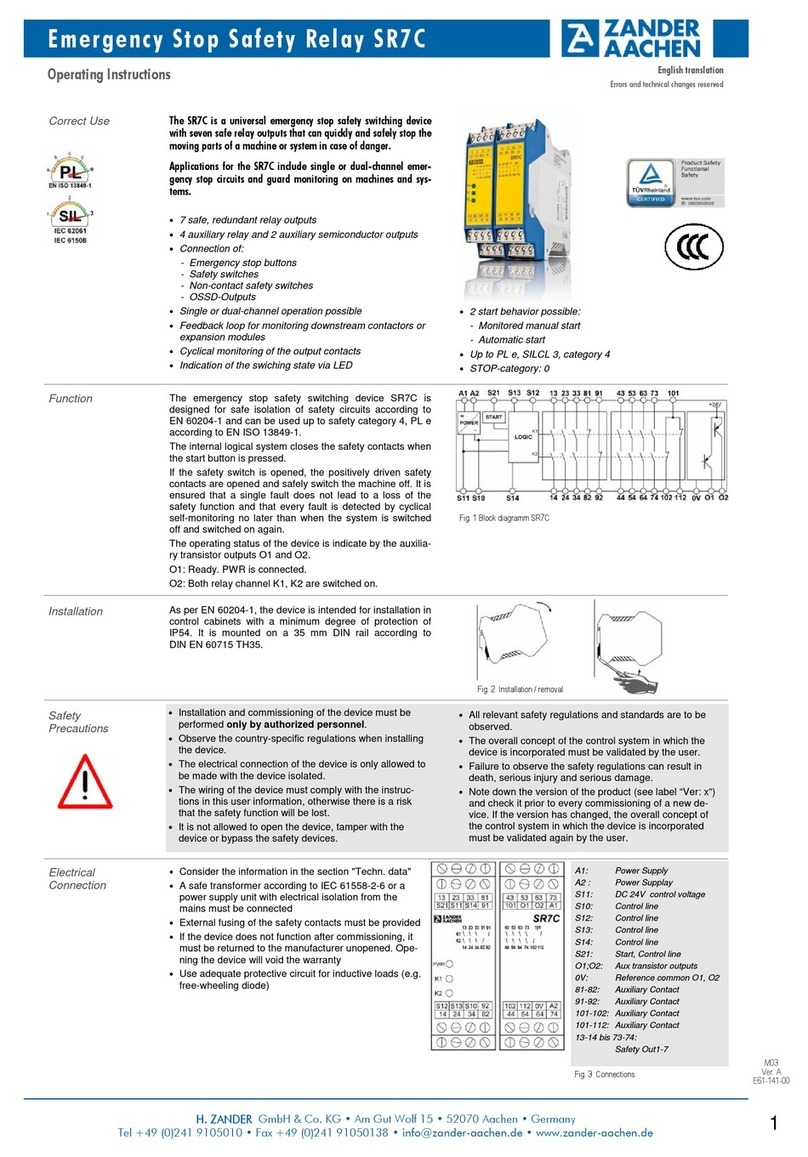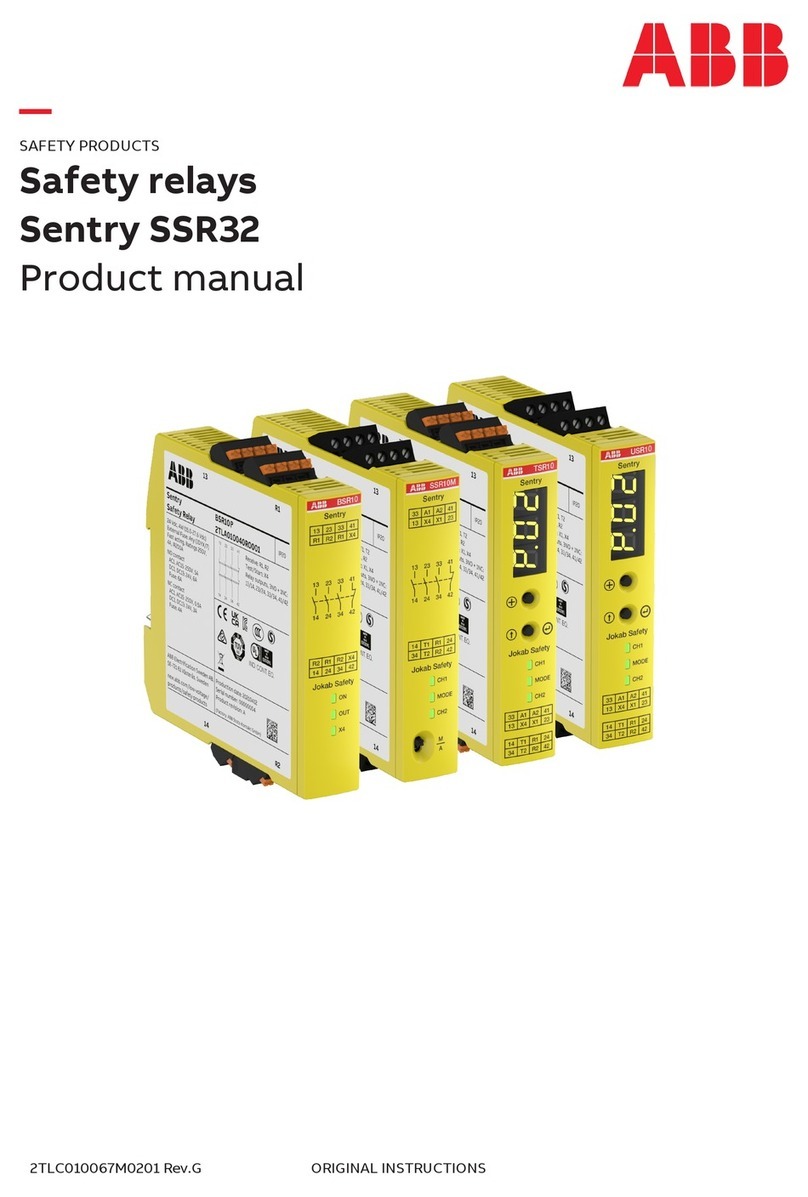
4
Safety Relay MINOS SD1E
• who are familiar with proper handling of the
safety components
• who are familiar with the applicable EMC
and ESD regulations
• who are familiar with the local regulations
concerning work safety and accident
prevention
• who have read and understood these
operating instructions.
The user shall be responsible for integrating
the device into a safe overall system. For this
purpose, the overall system has to be vali-
dated, e.g. according to EN ISO 13849-2.
Opening the device, any kind of manipulation
to it and bypassing the safety devices are not
permitted.
The device version (see nameplate "Ver.")
should be stored and checked before every
commissioning. If there is a version change,
the use of the device in the overall application
should be revalidated.
1. Scope
This document is valid for the following safety
modules:
MINOS SD1E (Order-No.: 472841)
2. Target group
Specialist electricians and assembly, setup
and service specialists who possess special
knowledge in working with safety compo-
nents.
3. Safety instructions
Safety components are intended to
protect people. Not following the
safety instructions, improper instal-
lation or manipulation may result in
fatal injuries to persons and damage to
property. Safety devices must not be by-
passed, removed or manipulated in any way.
Please follow all the safety instructions and
warnings mentioned in this document.
Installation, commissioning, maintenance,
and decommissioning should be done only by
authorised and qualified technicians:
